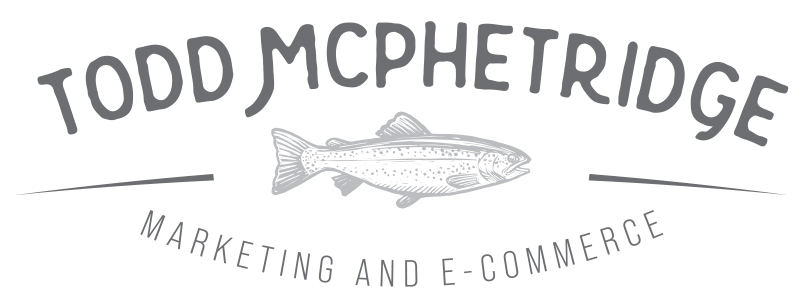Growth teams do not need more theory. They need a short list of CRO experiments that are cheap to run, quick to judge, and likely to lift revenue. The five experiment cards below focus on delivery clarity near the CTA, a video-first gallery, a visible starter bundle tile, a short remarketing window, and creator whitelisting. Each card includes a hypothesis, setup, measurement plan, expected range for ROAS lift tests, pitfalls, and a simple go or no-go rule. Treat these as quick win marketing tests you can schedule this month.
How to Run These Experiments Without Chaos
- One change at a time: assign a single owner, a clear start and end date, and a specific success threshold.
- Traffic split: use equal splits for on-site tests and holdouts for ads. Avoid overlapping tests on the same SKU or landing.
- Cash metrics first: measure contribution and payback alongside conversion and AOV. Do not scale anything that improves vanity metrics but harms margin.
- Write a one-paragraph readout: what changed, what you saw, what you will keep or roll back.
Experiment Card 1: Delivery Clarity Near the CTA
Goal: reduce friction and lift conversion by answering arrival and returns questions at the exact decision point.
- Hypothesis: placing a short delivery window and returns summary next to the add to cart button will increase add to cart rate and overall conversion because shoppers feel less risk.
-
Setup: add two short lines within the first mobile screen:
- “Estimated delivery: Tue–Thu” or a plain date range tied to stock state and location.
- “Free returns within 30 days” or a brief rule that is true and simple.
- What to measure: add to cart rate on the tested PDPs, purchase conversion, and support tickets about shipping or returns.
- Expected lift: +3 to +8 percent conversion on mobile hero SKUs; higher if the category has size or fit anxiety.
- Pitfalls: vague language like “fast shipping.” Use dates. Keep the copy short so it does not compete with the CTA.
- Go or no-go: keep if conversion lifts at least 3 percent with no increase in return rate or fulfillment exceptions.
Experiment Card 2: Video-First Media Gallery
Goal: show outcome and scale in motion to increase engagement and confidence on mobile.
- Hypothesis: leading the gallery with a five to eight second video that shows the product solving a job will increase gallery interactions and lift conversion on high-intent traffic.
- Setup: place a short clip as the first media asset on mobile. Keep it silent autoplay with captions. Show the hero in context and one closeup that matters.
- What to measure: media engagement rate, add to cart rate, purchase conversion, and time to first interaction.
- Expected lift: +2 to +6 percent conversion on mobile, with higher lift for products where size, motion, or texture matters.
- Pitfalls: heavy files that slow the first paint. Compress, lazy load, and avoid long intros that delay the reveal.
- Go or no-go: keep if conversion lifts two percent or more without hurting page speed targets.
Experiment Card 3: Starter Bundle Tile Beside the Hero CTA
Goal: raise AOV by presenting a complete solution at the point of decision.
- Hypothesis: a visible “Starter Bundle” tile that includes the hero SKU, one essential companion, and a care item will increase attach rate and AOV without discounts.
- Setup: add a bundle tile directly beside the main CTA on the PDP. Label it by job to be done, for example “First-Time Setup Bundle.” Show the components, the total price, and the outcome one-liner.
- What to measure: bundle attach rate, AOV on the tested PDPs, contribution per order, and return rate.
- Expected lift: +6 to +15 percent AOV with stable contribution when the bundle truly completes the job.
- Pitfalls: random extra items that feel like upsell for its own sake. Keep it three or four items max. Validate inventory first.
- Go or no-go: keep if AOV rises at least five percent and contribution stays at or above baseline.
Experiment Card 4: Short Remarketing Window With Frequency Cap
Goal: reduce waste on warm audiences and reallocate to higher intent reach.
- Hypothesis: shortening remarketing recency to seven days and enforcing a cap of three to five impressions per week will reduce overlap and improve blended efficiency.
- Setup: create two remarketing sets: 0–7 days and 8–30 days. Fund the 0–7 pool first. Apply a hard frequency cap and suppress engaged email and SMS segments during heavy sends.
- What to measure: blended CAC by layer, impression overlap with owned lists, frequency distribution tail, and revenue from the warm pools.
- Expected lift: 5 to 15 percent improvement in blended efficiency from reduced waste and cleaner reads on creative.
- Pitfalls: starving warm traffic in categories with longer evaluation cycles. If your cycle is longer, set 0–14 days as the primary pool.
- Go or no-go: keep if blended CAC improves and frequency tail above cap shrinks without lowering total revenue.
Experiment Card 5: Creator Whitelisting With Offer Parity
Goal: borrow trust and reach while holding the same guardrails as brand ads.
- Hypothesis: running ads from a creator’s handle with the same landing intent and offer parity will improve thumb-stop rate and CAC without distorting ROAS.
- Setup: license two or three creator assets that match your top creative pillars. Run them via the creator’s handle with clear briefs and UTMs. Keep offers identical to brand ads to avoid promo dependency.
- What to measure: CPA to add to cart, blended CAC, payback by acquisition cohort, and performance by pillar.
- Expected lift: varied by category. Typical wins are lower CAC in early learning and stronger engagement metrics that translate to qualified sessions.
- Pitfalls: uneven rights agreements and off-brief messaging. Lock rights, naming, and landing intent in a one-page brief before launch.
- Go or no-go: keep if CAC meets guardrails and day 60 revenue per customer tracks near brand ads for the same pillar.
Measurement Plan for All Five
- Primary metrics: conversion rate on tested PDPs, AOV, contribution per order, blended CAC by layer, and payback by acquisition cohort.
- Secondary signals: media engagement for the video-first gallery, bundle and add-on attach rate, frequency distribution tails, creator pillar CTR.
- Consistency: record test dates, traffic mix, and any confounding events such as promos or stock-outs.
Scorecard Template for Experiment Readouts
| Experiment | Win Metric | Result | Decision | Owner | Notes |
|---|---|---|---|---|---|
| Delivery clarity near CTA | +3% conversion with stable returns | ___ | Keep / Roll back | ___ | ___ |
| Video-first gallery | +2% conversion, speed intact | ___ | Keep / Roll back | ___ | ___ |
| Starter bundle tile | +5% AOV, margin safe | ___ | Keep / Roll back | ___ | ___ |
| Short remarketing window | Better blended CAC, controlled frequency | ___ | Keep / Roll back | ___ | ___ |
| Creator whitelisting | CAC within guardrails, healthy day 60 value | ___ | Keep / Roll back | ___ | ___ |
Playbook: One-Week Sprint to Ship All Five
- Day 1: set test owners, define success thresholds, and create the scoreboard.
- Day 2: implement delivery clarity next to the CTA on two hero PDPs. Prepare the video-first asset and compress it.
- Day 3: add the starter bundle tile beside the CTA, label it by job to be done, and confirm inventory coverage.
- Day 4: adjust remarketing windows and apply frequency caps. Sync suppressions with email and SMS.
- Day 5: launch creator whitelisting with rights, UTMs, and offer parity locked. Publish the first readout.
FAQ for Growth Teams
How do we avoid splitting traffic too thin
Focus on two hero SKUs and the highest volume landing first. Stagger tests that target the same audience or page element.
What if the video hurts speed
Trim to five seconds, compress aggressively, and lazy load. If speed still suffers, test a lightweight motion graphic or looped closeup.
Will the bundle hurt conversion
It can if it is irrelevant or hidden. Place a job-based bundle tile beside the CTA with clear math and outcome language. Monitor attach rate and returns.
How strict should frequency caps be
Start at three to five per seven days for remarketing. If your category has a long evaluation cycle, increase the window but keep a cap to prevent fatigue.
Get an Experiment Slate for Your Brand
If you want a fast plan that your team can ship this month, request a customized slate. I will map experiment order, success thresholds, and owners across your top SKUs and landing paths, then deliver a simple scoreboard you can run weekly. Expect a practical set of CRO experiments, ROAS lift tests, and quick win marketing tests aligned to your category and payback goals.

















